
Caracal
Caracal
Caracal
Have you ever heard of a wild feline with tufted hair on the ends of its ears called a caracal? Caracals are famous for their distinctive ear hair and jumping ability, and can be seen in zoos in some countries. Also caracal has an unusual history of being used by royalty for rabbit hunting and bird hunting because it is easy to get attached to people. Let's take a peek together in this article to see what features and secrets calacal has!
Caracal Basic Infomation
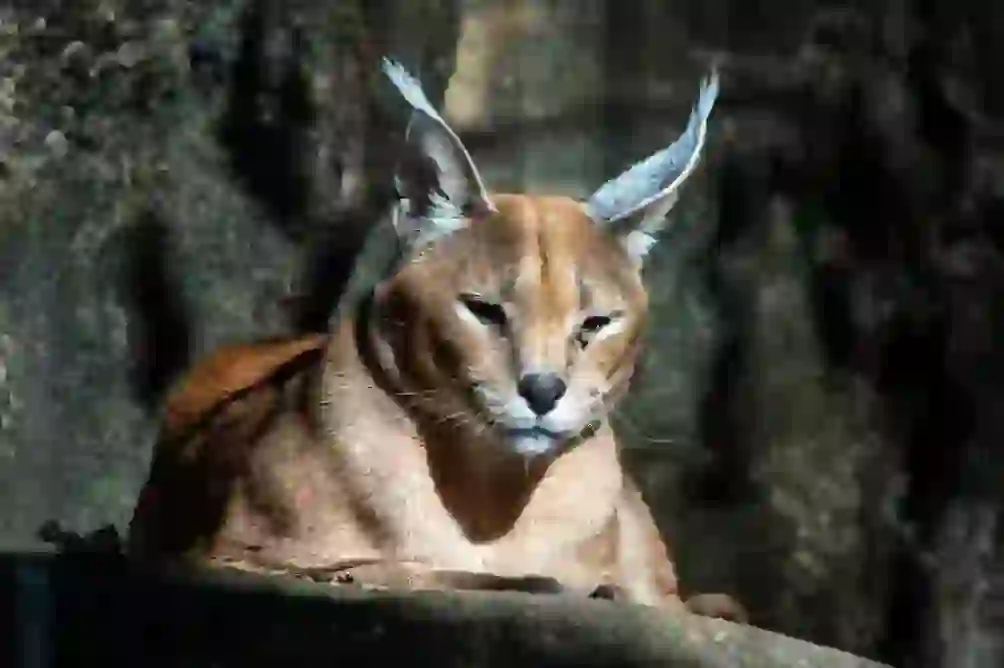
Mammalia-Carnivora-Felidae-Caracal genus.
Length:60~92cm weight:8~19kg.
Calacal is a medium-sized feline animal that resembles the lynx. The coat is short-haired and reddish yellowish brown in color, with no noticeable pattern. The most important feature of such caracal is the black tufted hairs that grow on the tips of the ears.
Caracals basically live alone, with males and females acting together only when they mate. They reach sexual maturity after about two years of age, but since there is no fixed breeding season, those that live in the tropics tend to give birth all year round, while those that live in the subtropics tend to give birth in the spring.
The gestation period is about 69-78 days, and each birth produces 1 to 6 babies (average 2 to 3).
Wild caracals use feathers and animal hair to build nests in safe places such as tree caves and rock cracks, where they give birth. Children live with their mothers for up to a year and learn how to hunt, avoid danger, and other things necessary to survive.
Caracal Q&A

What is the origin of the name caracal?
The name "caracal" is thought to have originated from the Turkish words "kara" (black) and "kulak" (ear), which mean "black ears.
It seems to have been given this name because the tufts of hair behind and at the ends of caracal's ears are black.
By the way, it is sometimes called "desert lynx" in English. (It means "desert lynx.)
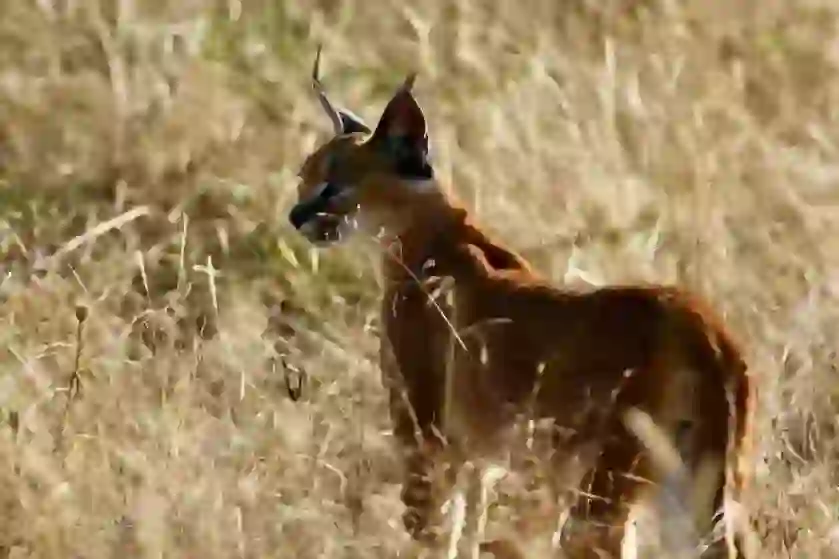
Why does caracal live there?
Caracal is found in relatively dry areas such as forests and savannahs in India, Pakistan, Afghanistan, and the African continent.
They are basically nocturnal, resting in bushes, cracks in rocks, and on trees where they can hide during the day, and go hunting at night to catch their prey with excellent hearing and eyesight.
The area where caracal lives is home to many large to medium-sized carnivores such as lions, leopards, and hyenas, as well as herbivores that serve as their prey.
Since there is enough prey for large carnivores to live in these areas, it is thought that caracal, which requires a lot of prey, also lives in these areas.
Incidentally, caracals have a habit of using cracks in rocks, deep bushes, and holes dug and discarded by porcupines and aardvarks as burrows.
Perhaps there is an aspect of caracal that lives "there" in order to secure a good burrow.
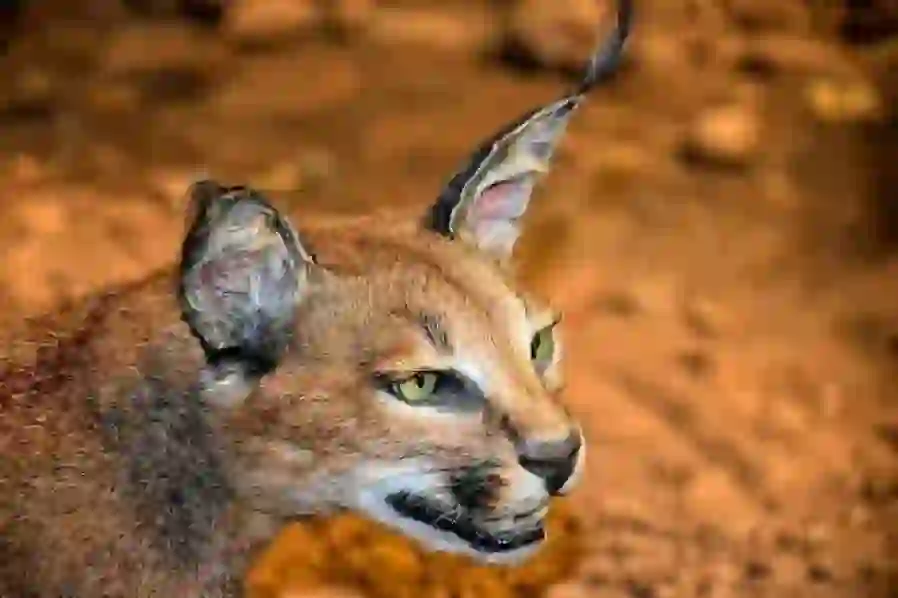
What does caracal eat?
In the wild, caracals catch and eat a variety of animals, including small antelopes, small animals (such as hilux, rats, and rabbits), birds, and lizards.
If you prey on small rodents such as rats, it is said to catch as many as 3,000 prey per year.
Caracal hunting is often done by sneaking up on their prey or waiting for them. It creeps up to a distance of about 2 to 3 meters from its prey, and when the prey is caught off guard, it jumps on it and catches it at once.
They are said to have a strong nocturnal tendency, but sometimes they hunt during the day.
By the way, zoos often feed horses, chicken meat, and chicken heads as food.

Why are there decorative hairs on caracal's ears?
In fact, the reason for this hair is not clearly known, but it is thought that it has a "sound collection effect" that collects sound, and that caracal uses this effect to detect the slightest sound emitted by its prey and the movement of the wind.
It seems to be particularly useful for sensing ultrasonic vibrations emitted by birds.
By the way, this hair is called "linkstip" and grows on the ears of lynxes. Both calacals and lynx cats have difficulty hearing sounds when their ear hair is cut, which reduces the success rate of hunting.
Another theory is that ear hair may be used to communicate with other friends.

Is it true that caracal is athletic?
It's true.
Caracal has long limbs and well-developed muscles in the hind limbs, so it can jump to a height of 2 to 3 meters without running. You can also jump from the ground and catch birds flying in the sky.
It is also said to be able to kill prey that weighs three times as much as you do because of its large forelimbs and sharp, well-developed claws.
In fact, in the habitat of caracal, they have been seen attacking antelopes, which are larger than themselves, and ostriches, which are the largest birds on the ground.

Is it true that caracal is friendly?
It's true.
Caracal has a brave face, but he is said to be friendly, especially when he is young.So, in the old days, Indian and Iranian royalty tamed caracal and used him as a partner when hunting rabbits and birds.
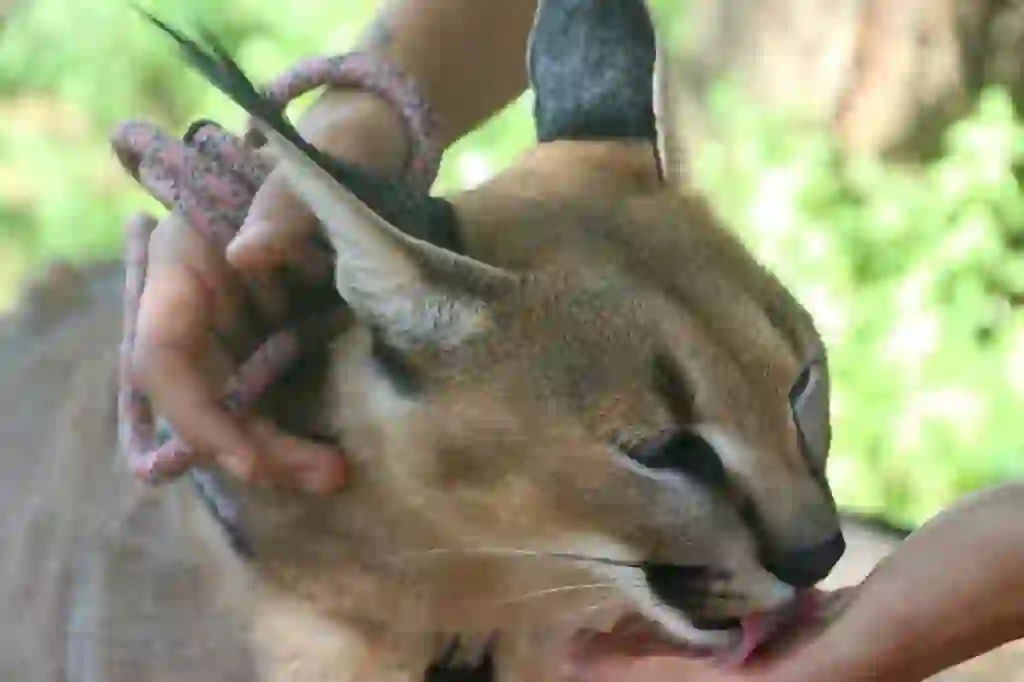
Can I keep caracal as a pet?
Caracal is a very attractive animal, but can individuals keep it as a pet?
Whether or not you can keep a caracal as a pet at home depends on the laws of each country, so this article will mainly introduce whether or not you can keep a caracal in Japan.
Caracal is designated as a "specified animal" by Japanese law, which may pose a danger to human life and property.
Since June 1, 2020, it has been completely prohibited to keep specified animals for pet purposes, so it is not possible to keep caracal as a pet in Japan.
However, before May 2020, individuals could keep specific animals if they met the set conditions, so there may still be people in Japan who keep caracal as a pet.
For your information, caracal is listed in "Annex I" of the Convention, Washington Convention, for individuals living in Asia, and in "Annex II" for individuals living in other regions.
It may be a little difficult to explain, but the animals listed in Appendix I are prohibited from being exported or imported for commercial purposes.
On the other hand, animals listed in Annex II can be exported or imported for commercial purposes, but it is determined that export permits and other documents are required.
In other words, it is not impossible to buy caracals that live in Africa and other parts of the world, but in Japan today, caracals cannot be kept as pets.
※On the washington convention.
The official name is the "Convention on International Trade in Endangered Species of Wild Fauna and Flora", which refers to the agreement between countries when exporting or importing products made from animals or parts or all of animals that are feared to be extinct.
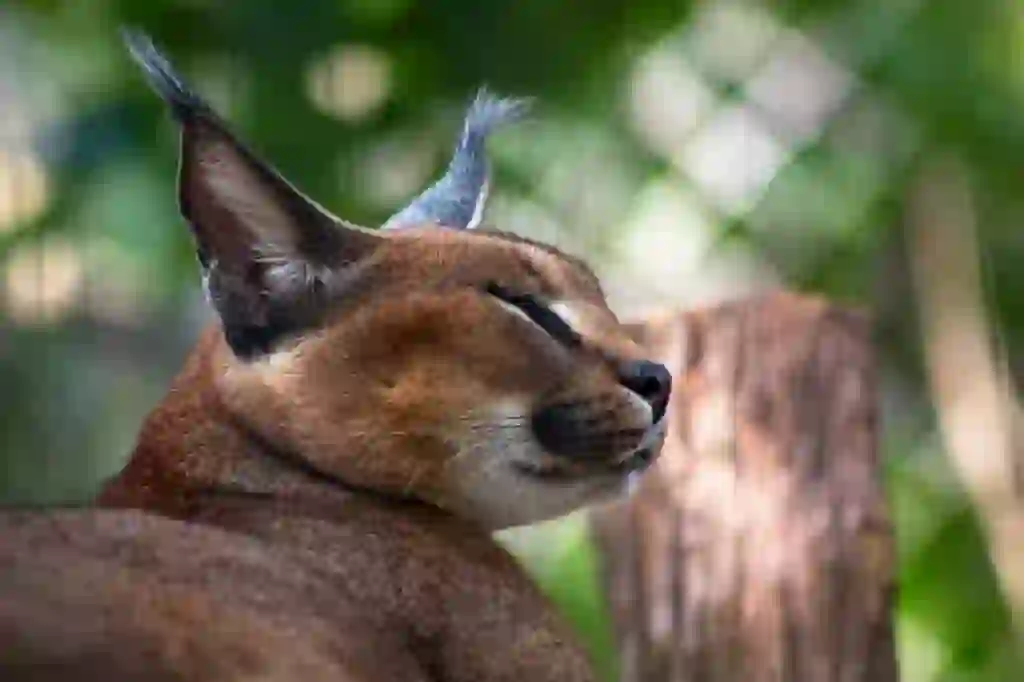
Is it true that caracal has a cute squeaker?
It's true.Caracal is known to have a variety of sounds.
Caracal makes a "meow" or "mew" sound, just like a domestic cat, and also makes a "hiss" sound when threatening.
Also, caracal babies sometimes make noises such as "myaruru" and "piruru", and the noise has become a hot topic on social networking sites because it sounds like a Pokémon.
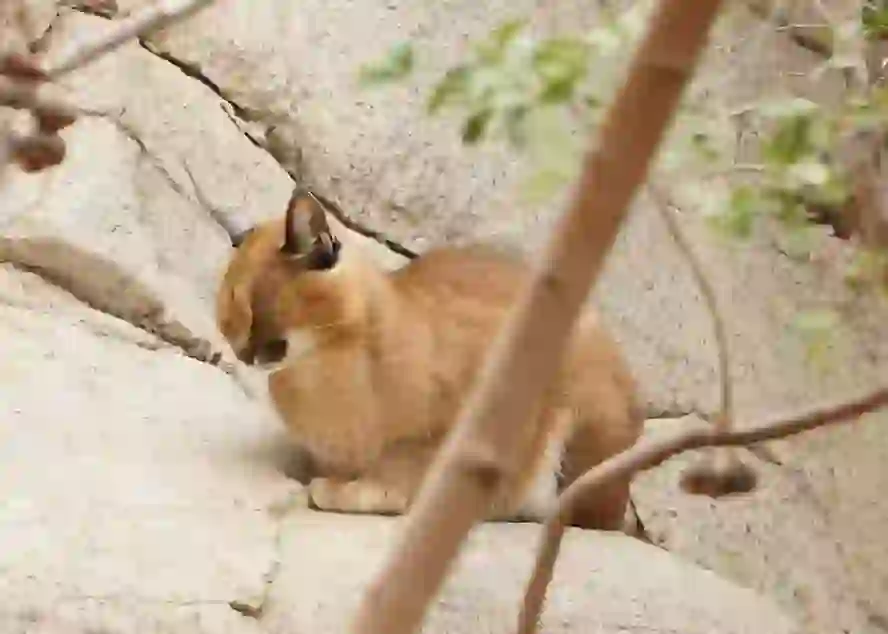
How long does a caracal last?
The lifespan of caracal is said to be 10 to 12 years in the wild and 15 to 18 years in captivity. Incidentally, "Ken", a male caracal kept at the Sapporo Maruyama Zoo in Hokkaido, Japan until 2007, lived to be 15 years and 8 months old.

What kind of enemies are there in caracal?
In the wild, caracal's natural enemies are lions, leopards, hyenas, and other carnivores that are larger than they are. Caracals are sometimes preyed upon by these animals.
But for caracal, our greatest enemy is us humans.
Many individuals of caracal have been caught for a long time to keep as pets or to use for hunting.
In addition, they attack livestock and poultry such as goats, sheep, calves, and chickens, which are disliked by farmers and exterminated endlessly, and the number of them has decreased considerably in some areas.

Would you like to become a part of the 'Animalbook.jp'?
Turn your knowledge into Q&A and share it with the world. ※Publication will be activated after purchase. Let's share information together!
Caracal Type of List
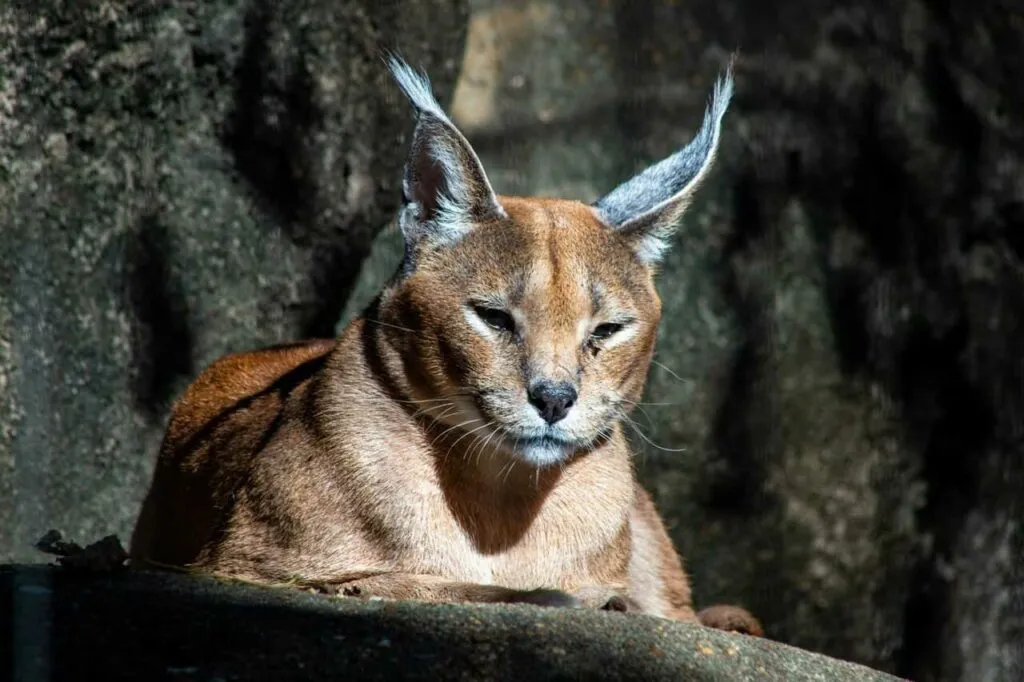
- Caracal
Information
Congratulations! You are the first commenter!

Create Your Favorite List!
Caracal
Save the animals you love! Build your own list to quickly revisit your favorites later.

Would you like to leave a comment?
※Please note: This is for the purchase of rights to post comments within the article.
Find Your Favorites!
Our shop offers a unique and attractive selection of goods themed around various animals.
Caracal References

- 今泉 忠明(2004年)『野生ネコの百科』データハウス
- 東京ズーネット「どうぶつ図鑑 カラカル」 https://www.tokyo-zoo.net/encyclopedia/species_detail?species_code=29
- 大内山動物園「動物図鑑 カラカル」 http://www.oouchiyama-zoo.com/animals/6547/
- 札幌市円山動物園「カラカルの「ケン」が天国へ旅立ちました」 https://www.city.sapporo.jp/zoo/topics/topics2-19.html
- CAROLINA TIGER RESCUE「Caracal」 https://carolinatigerrescue.org/species/caracal/
- SmartFLASH「アンタッチャブル・柴田が聞く「ネコ科動物」がっかり雑学(2)」 https://smart-flash.jp/lifemoney/10283
Caracal Introduction of media used

出典:https://unsplash.com/photos/BlLrC0j7WSI

出典:https://www.pexels.com/ja-jp/photo/2278165/

出典:https://pixabay.com/images/id-4022731/

出典:https://www.pexels.com/ja-jp/photo/2278163/

food
出典:https://pixabay.com/images/id-3897733/
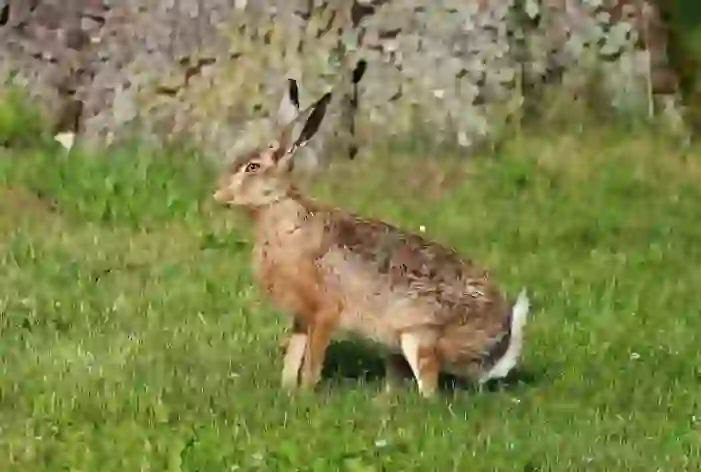
food
出典:https://pixabay.com/images/id-5311376/

出典:https://unsplash.com/photos/w-AAV86xQN0

出典:https://unsplash.com/photos/7bfQMyGBQZg

出典:https://www.pexels.com/ja-jp/photo/789584/

出典:https://unsplash.com/photos/HgIu6cX-Yhw

出典:https://pixabay.com/images/id-4012455/

出典:https://pixabay.com/images/id-1352255/

enemy
出典:https://pixabay.com/images/id-1657947/

enemy
出典:https://pixabay.com/images/id-515510/

Help Enrich Our Animalbook.jp with Your Media!
We are constantly looking to expand and enrich our Animalbook.jp with amazing photos and videos of animals. If you have any media that you'd like to share, please contribute and help us showcase the beauty and diversity of the animal kingdom. Your submissions will be credited and featured in our encyclopedia, reaching a wide audience of animal lovers.


















